Seeing the massive bald eagle swoop down to catch a salmon is a thrilling highlight of visiting Alaska! A national emblem of the U.S. since 1782, the eagle has been a part of Alaska Native’s spiritual traditions for thousands of years. These birds of prey have a wing span of up to 7 1/2 feet and weigh between 8 and 14 pounds. Bald eagles are found only in North America and, with a population of about 30,000 birds, are more abundant in Alaska than anywhere else in the U.S. (that’s about 75% of their breeding population)! We typically see bald eagles in marine zones and river valleys where they forage for fish, including Southcentral coastal zones and around the Kenai River.
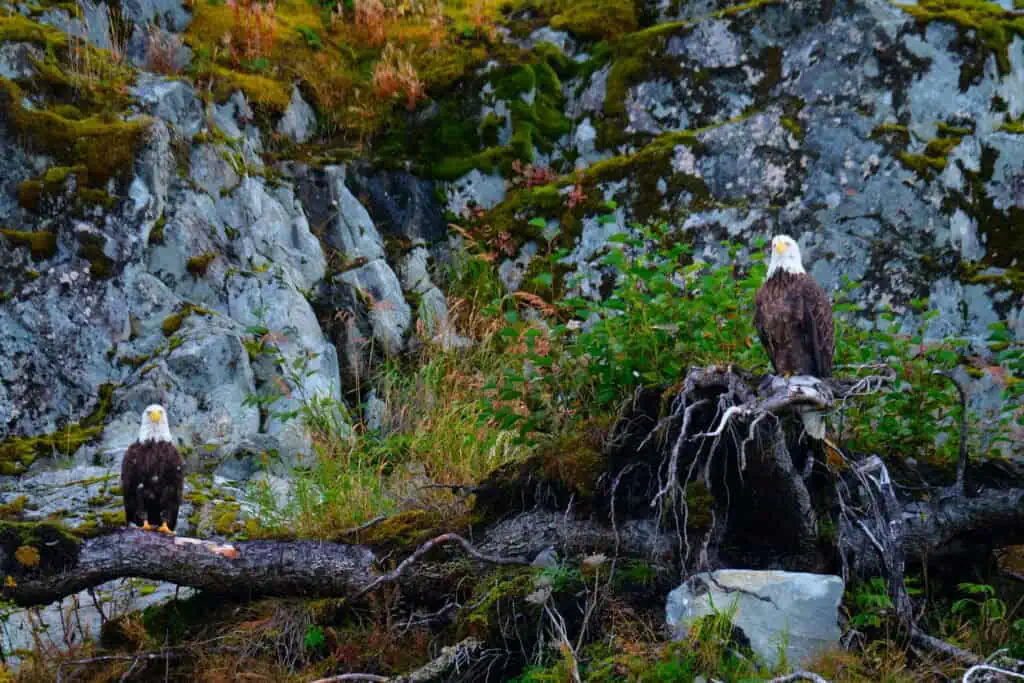
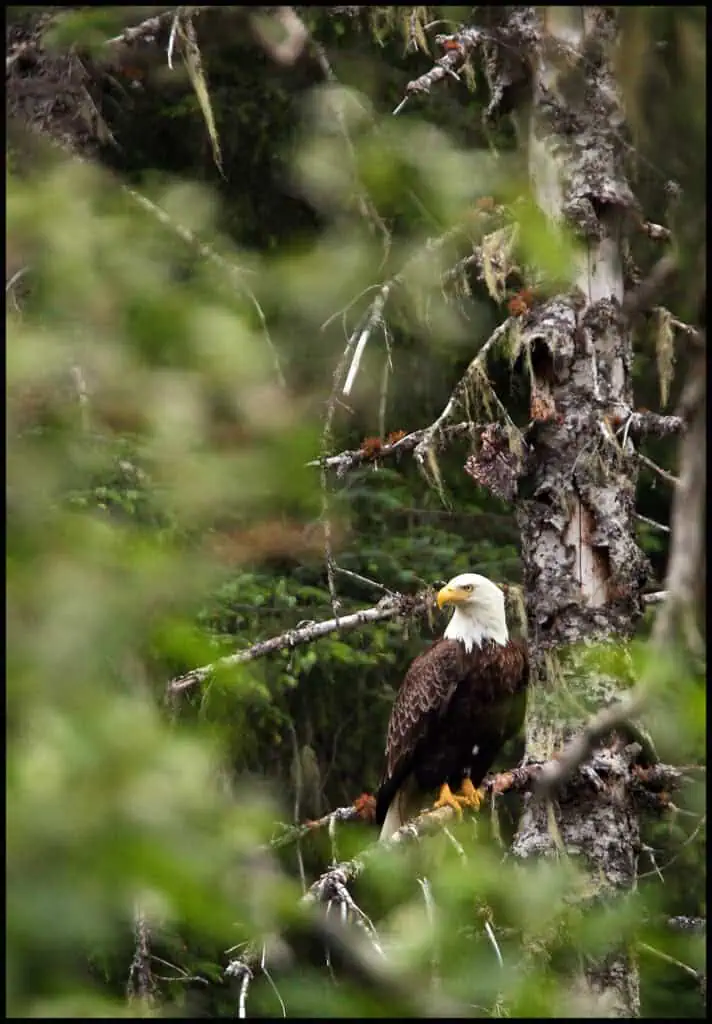
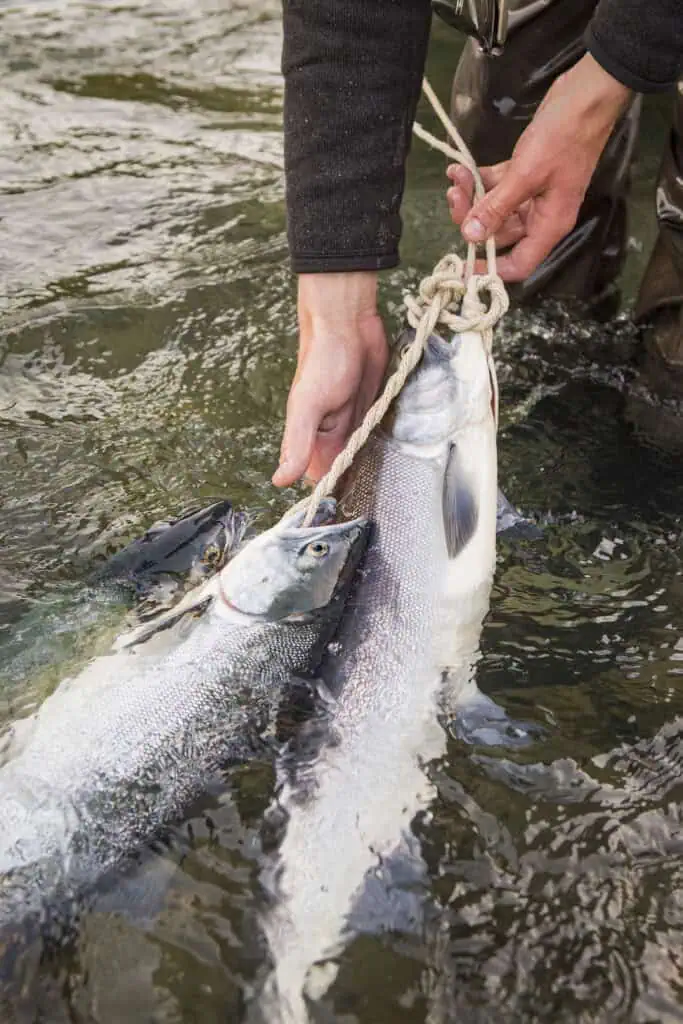
Adult bald eagles are characterized by a dark brown body, a distinctive white head and tail, and large yellow beaks and talons. Juvenile eagles have mottled brown and white plumage with a dark beak and don’t gain their full adult plumage and coloring until they are about five years old. Eagles have a very distinct call: they throw their head back and produce a high-pitched trill. Listening for this call can be a helpful way of locating them.

While salmon and other fish such as herring, flounder and pollock comprise a large part of their diet, bald eagles are considered opportunistic feeders and will eat birds, small mammals and carrion (already-deceased animals). Eagles are visual hunters, which is why we often see them watching from a high vantage point until they swoop down to capture their prey.
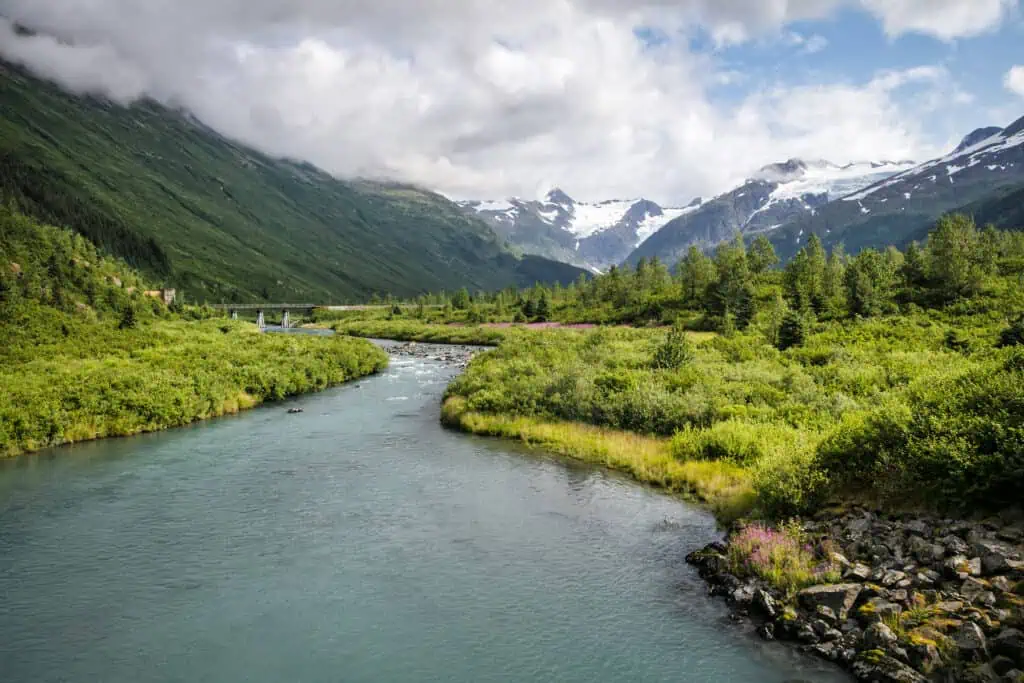
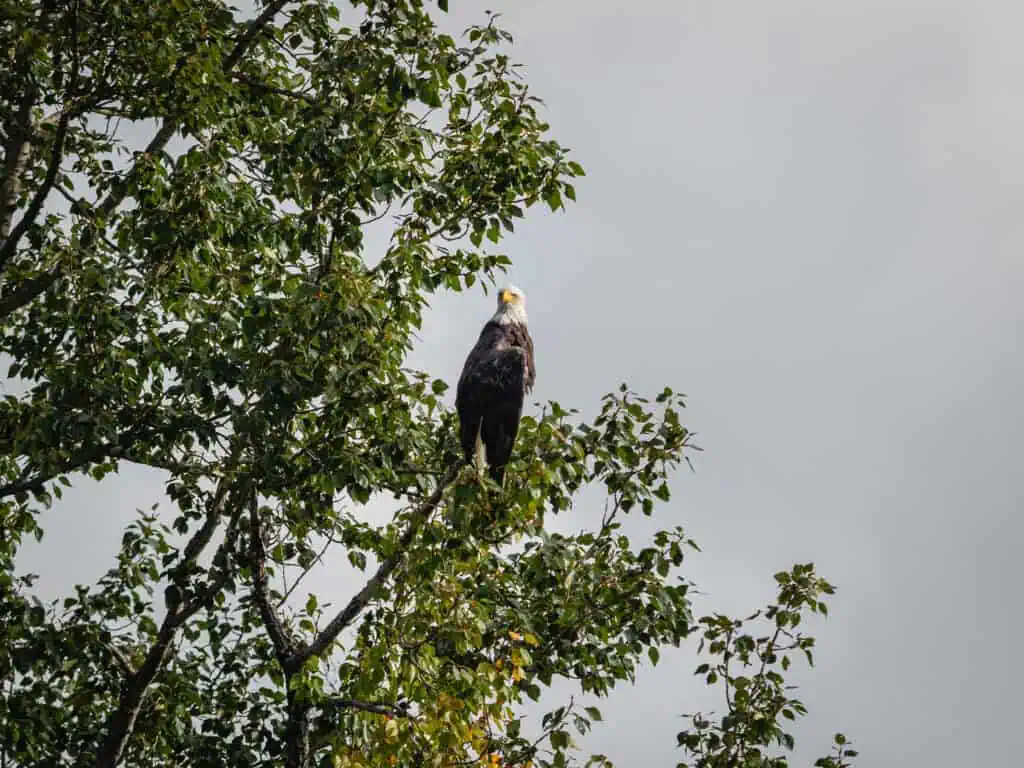
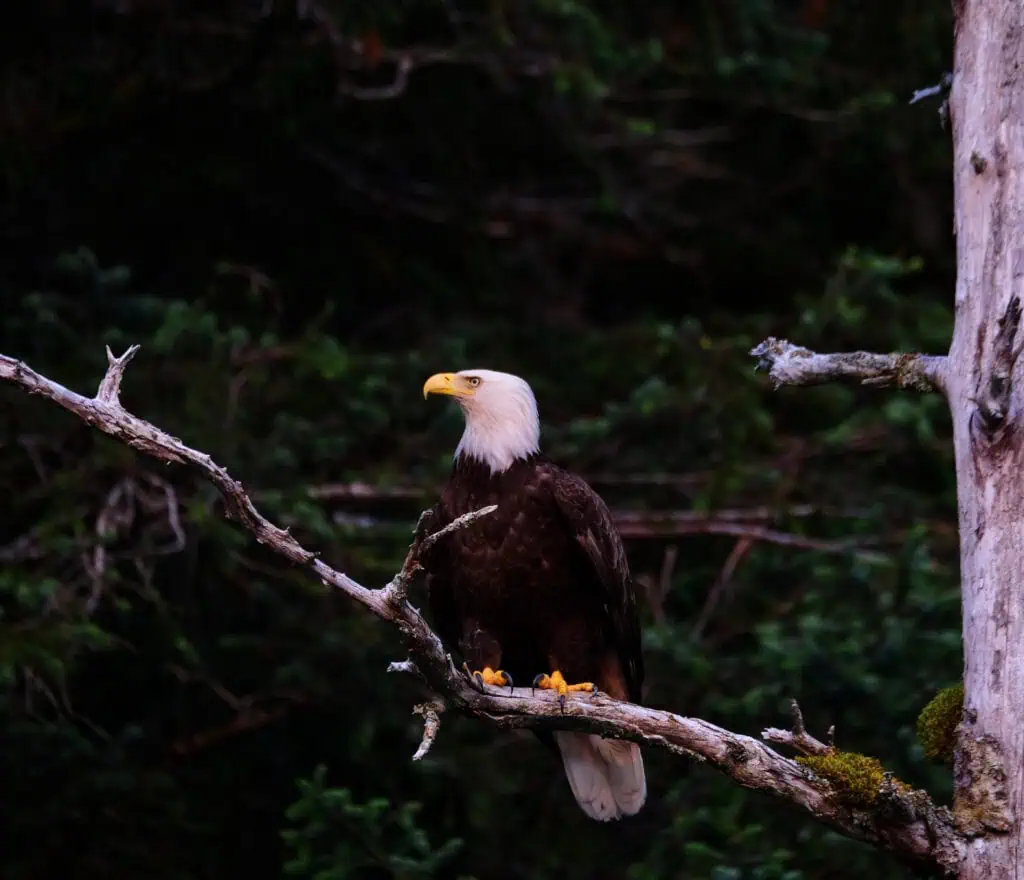
Bald eagles build large nests to lay their eggs and often reuse the same nest for multiple breeding seasons. They prefer trees that are close to water and are sparsely covered from above, allowing a good view of the surrounding area. Two or three eggs are laid in late April and, with luck, hatch after about 35 days. After about 75 days, the surviving chicks leave the nests. The highest nesting densities occur in Southeast Alaska where bald eagles usually nest in old-growth trees along the ocean shorelines or near the rivers. Eagles in Southcentral Alaska often nest in old cottonwood trees.
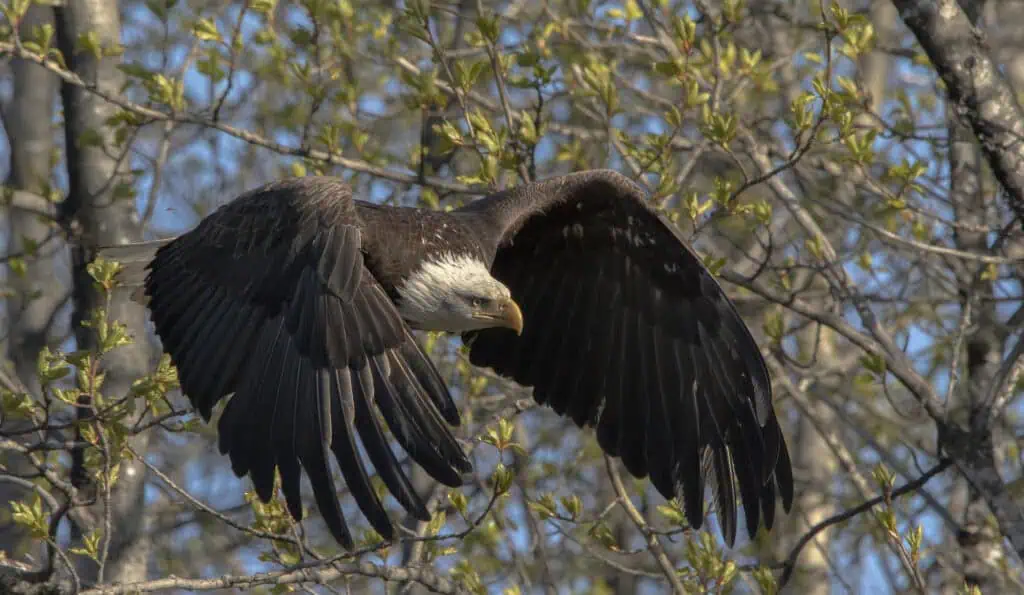

Bald eagles have never been considered endangered in Alaska but were listed as endangered or locally extinct in the lower 48 states. With care and management, the bald eagle population has recovered and was removed from the Endangered Species Act list in 2007. As with all of our wildlife viewing, we’re proud of our “leave no trace” ethos, which includes viewing all wildlife from a distance that does not disturb them or change their behavior (even if the opportunity exists to get closer) and avoiding or taking special care in critical habitat areas.
More information about bald eagles and other raptors can be found at the Fish and Wildlife Service’s website and the Alaska Department of Fish and Game website. For additional details on great places to spot bald eagles in Alaska, our friends at alaska.org have put together a guide with suggestions on spots to visit!